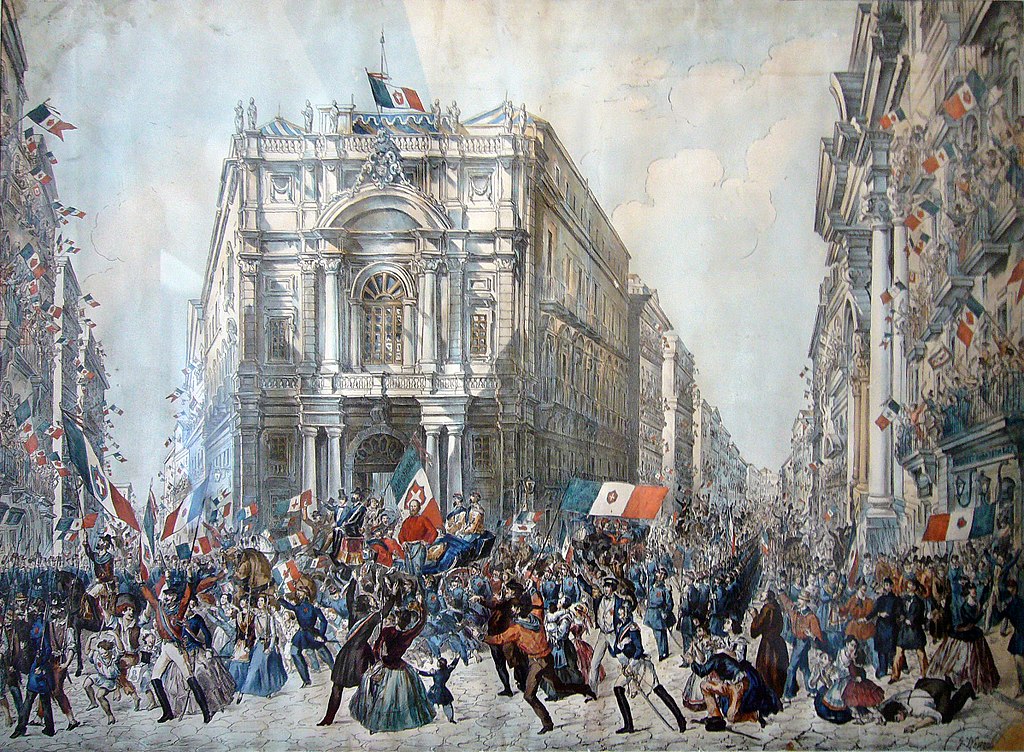

The Italian peninsula had not been united since the fall of the Roman Empire. By the middle of the nineteenth century, it was divided into a number of different states. In the south was the Kingdom of Two Sicilies. The middle of the peninsula was the Papal States, ruled by the Pope. In the north was the strongest Italian state, the Kingdom of Sardinia. The eastern part of Italy was Lombardy and Venetia, which were part of the Austrian Empire.
When the Revolutions of 1848 struck, Lombardy and Venetia went into rebellion against Austria. Carlo Alberto, the King of Sardinia, decided to take the process into his own hands by annexing Lombardy and Venetia. Sardinia declared war on Austria, but Carlo Alberto was soon defeated by the Austrian Marshal Josef Radetzky. Carlo Alberto abdicated in favor of his son, Victor Emmanuel II.
Meanwhile, the city of Rome rebelled against the pope and proclaimed a Roman Republic, but the pope was soon restored by French troops sent by Emperor Napoléon III.
Ten years later, Sardinia declared war on Austria again and this time managed to annex Lombardy in 1859. The Sardinian army then turned south and annexed Tuscany. Meanwhile, a revolutionary general named Giuseppe Garibaldi overthrew the Kingdom of the Two Sicilies and began to move north. When he met Victor Emmanuel, he handed over his power and retired. In 1861, Victor Emmanuel was proclaimed King of Italy.
Venetia was still part of the Austrian Empire, but when Austria got into a war with Prussia in 1866, the Italians attacked and the Austrians gave up the territory. The Papal States remained independent until the fall of Napoléon III in 1871. Without French support, the Papal States were reduced to Vatican City only, and the Italian capital was moved to Rome, completing the unification of Italy.
Are there really over two hundred types of pasta, or just one type of pasta in different shapes?